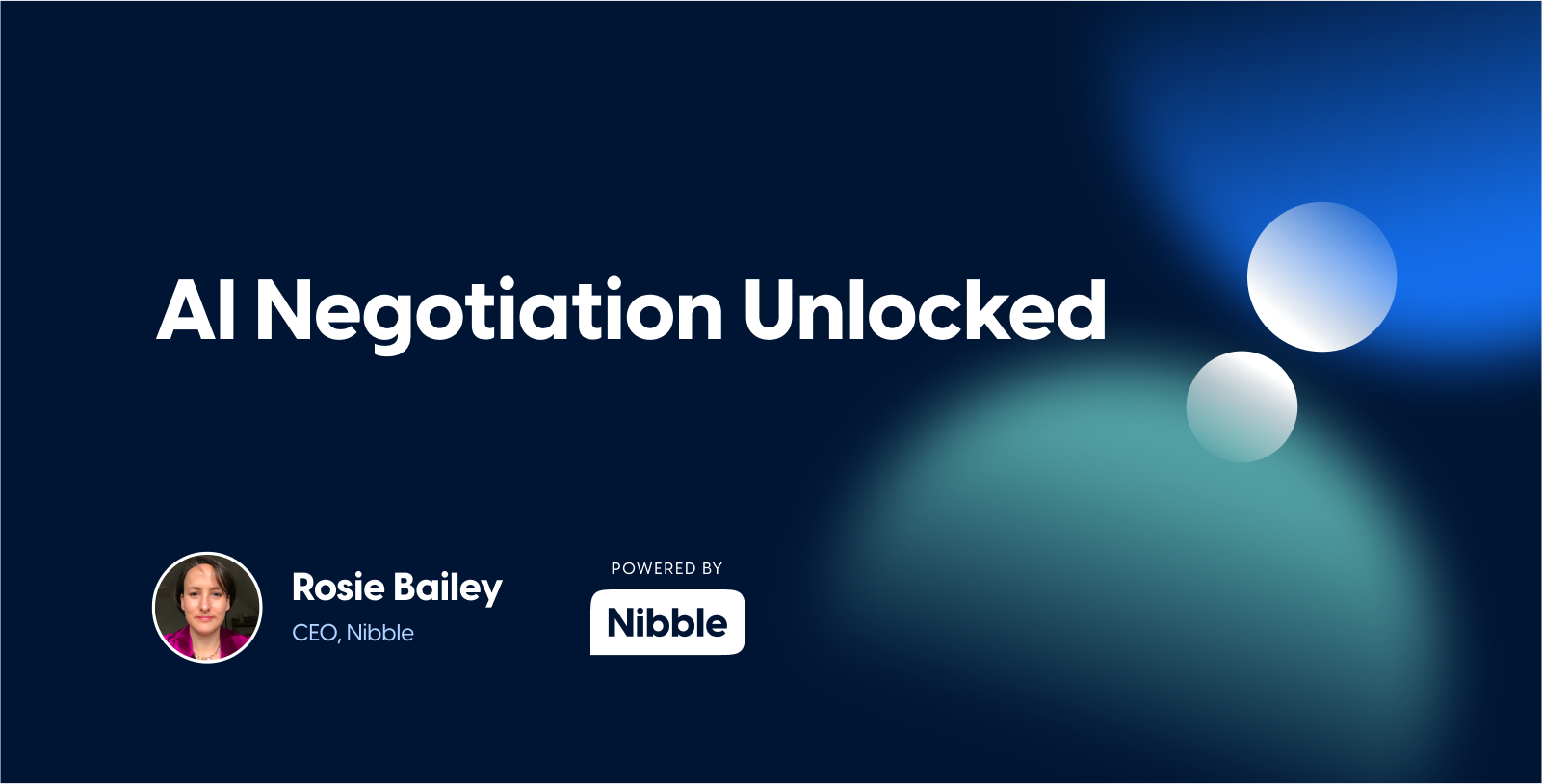
Autonomous negotiation is allowing businesses to (finally) tackle tail spend at scale and unlock substantial savings
Every Chief Procurement Officer (CPO) knows the Pareto principle in procurement: a few strategic suppliers command the bulk of spend, while a “long tail” of many smaller suppliers accounts for a relatively small share. Traditionally, that tail spend is neglected – procurement teams simply don’t have the bandwidth to negotiate hundreds or thousands of low-value contracts one by one. The result? A silent leakage of value. Research by KPMG estimates that 17–40% of value in deals is lost due to inefficient contracting, much of it hidden in these unmanaged tail contracts. AI negotiation technology (also known as autonomous negotiation) is emerging as a game-changer, allowing organizations to finally tackle tail spend at scale and unlock substantial savings.
The Hidden Cost of Ignoring Tail Spend
For many organizations, tail spend includes dozens or even hundreds of smaller suppliers – local service providers, indirect materials vendors, one-time purchases – that aren’t actively managed. Busy teams focus on the top 20% of suppliers that make up 80% of spend, meaning the other 80% of suppliers often go unattended. Contracts in the tail are frequently put on auto-renew or given a token fixed discount to save time. Over time, this “ignore it and renew it” approach adds up to significant lost value. Small contracts might carry higher prices, unfavorable terms, or outdated conditions simply because no one negotiated them. In fact, one industry analysis found that better managing tail spend can yield around 7% savings on average on that portion of spend– a gold mine for cost-saving initiatives. Beyond hard savings, ignoring tail spend can also introduce compliance risks and supplier relationship issues, as many smaller vendors feel overlooked.
Why AI Negotiation is Perfect for Tail Spend
Tail spend management is, at its core, a scale problem. The opportunity is spread across numerous small negotiations that would be too resource-intensive for humans to tackle individually. This is exactly where AI negotiation shines. An AI negotiation platform acts as an autonomous agent that can handle a high volume of similar negotiations simultaneously. It never gets tired or overwhelmed – whether there are 50 contracts or 5,000, the AI can engage each supplier with equal attention. Machines can renegotiate tail-spend deals far more efficiently and cost-effectively than humans. Instead of months of work for a team, an AI agent could renegotiate thousands of low-value contracts in the time it normally takes to complete one deal. The AI works 24/7, so even suppliers in different time zones or those who prefer odd hours can get immediate responses. Crucially, the AI follows a predefined strategy and data-driven guidelines – ensuring even the smallest contract is negotiated to optimize price, terms, and mutual value.
Delivering Win-Win Outcomes at Scale with AI Negotiation
A common concern is whether automated, autonomous negotiation might alienate suppliers. In practice, companies adopting AI negotiation report that suppliers often prefer the AI-driven process because it’s clear, fair, and fast. Each supplier – no matter how small – gets a chance to negotiate terms instead of being presented a “take-it-or-leave-it” contract. The AI agent can be empathetic and responsive, engaging in a natural conversational manner rather than a cold form letter.
This helps turn what used to be neglected relationships into positive, trust-building interactions. In fact, AI negotiation can help build stronger relationships with those tail suppliers by finding win-win outcomes that might be missed when procurement had no time to engage. For example, if a small regional supplier hasn’t seen a contract review in years, an AI negotiation might propose a volume discount in exchange for slightly longer payment terms – saving your company money while accommodating the supplier’s needs. Such creative trade-offs, driven by data and negotiation best practices, make both sides better off.
Suppliers also appreciate the speed and transparency. What might take weeks of back-and-forth emails and calls can often be resolved in a few minutes of interactive negotiation via an AI chatbot. Nibble, an AI negotiation provider, notes that a typical automated negotiation chat takes under five minutes per supplier yet often achieves a mutually agreeable deal. This means your procurement team can capture savings that were previously infeasible, and suppliers aren’t left waiting or wondering if they’ll ever get attention. It’s truly a win-win: the organization plugs value leaks in tail spend and those smaller suppliers feel heard and satisfied.
Real Results with AI Negotiation: Savings and Beyond in Procurement
The impact of applying AI negotiation to tail spend is tangible. In one real-world example, a large enterprise used an AI negotiation agent to renegotiate a multitude of small service contracts across its facilities. The campaign yielded over $10 million in savings on aggregate. Similarly, consumer goods companies have used AI negotiators for recurrent buys of raw materials and seen up to 4% reductions in cost on those inputs. These savings go straight to the bottom line.
Beyond cost savings, AI-driven tail spend negotiations bring consistency and compliance to what was a wild west of unmanaged deals. The AI will ensure each contract meets your standard commercial terms (for instance, aligning payment terms or service levels), reducing risk. One initiative not only saved millions but brought hundreds of suppliers onto consistent payment and legal terms, cleaning up contractual data in the process. Additionally, by addressing previously neglected suppliers, you reduce the chance of surprise issues – no more forgotten auto-renewals or suppliers that quietly overcharge for years.
Perhaps most importantly, tackling tail spend with AI negotiation frees up your human team. Instead of chasing every small contract, your procurement professionals can focus on strategic sourcing, major supplier partnerships, and high-impact projects. The AI handles the “long tail” heavy lifting. As one procurement leader put it, these tools “fix high-friction, low-glamour problems” that leak value – precisely the tasks that never got sufficient attention before.
Tail spend may have been long ignored, but it no longer needs to be.
AI negotiation empowers procurement to address the full spectrum of spend, not just the top-tier vendors. By automating and optimizing thousands of small negotiations, CPOs can unlock significant savings, tighten control over contracts, and even improve supplier goodwill. In an environment where every dollar and every relationship counts, autonomous negotiation technology turns tail spend from a headache into an opportunity. The message is clear: those untapped pockets of value across your supplier base are ripe for capture – and AI is the key to capturing them.
Find out more from Nibble’s experience negotiating 100,000 times a month here.
Interested in Nibble?
